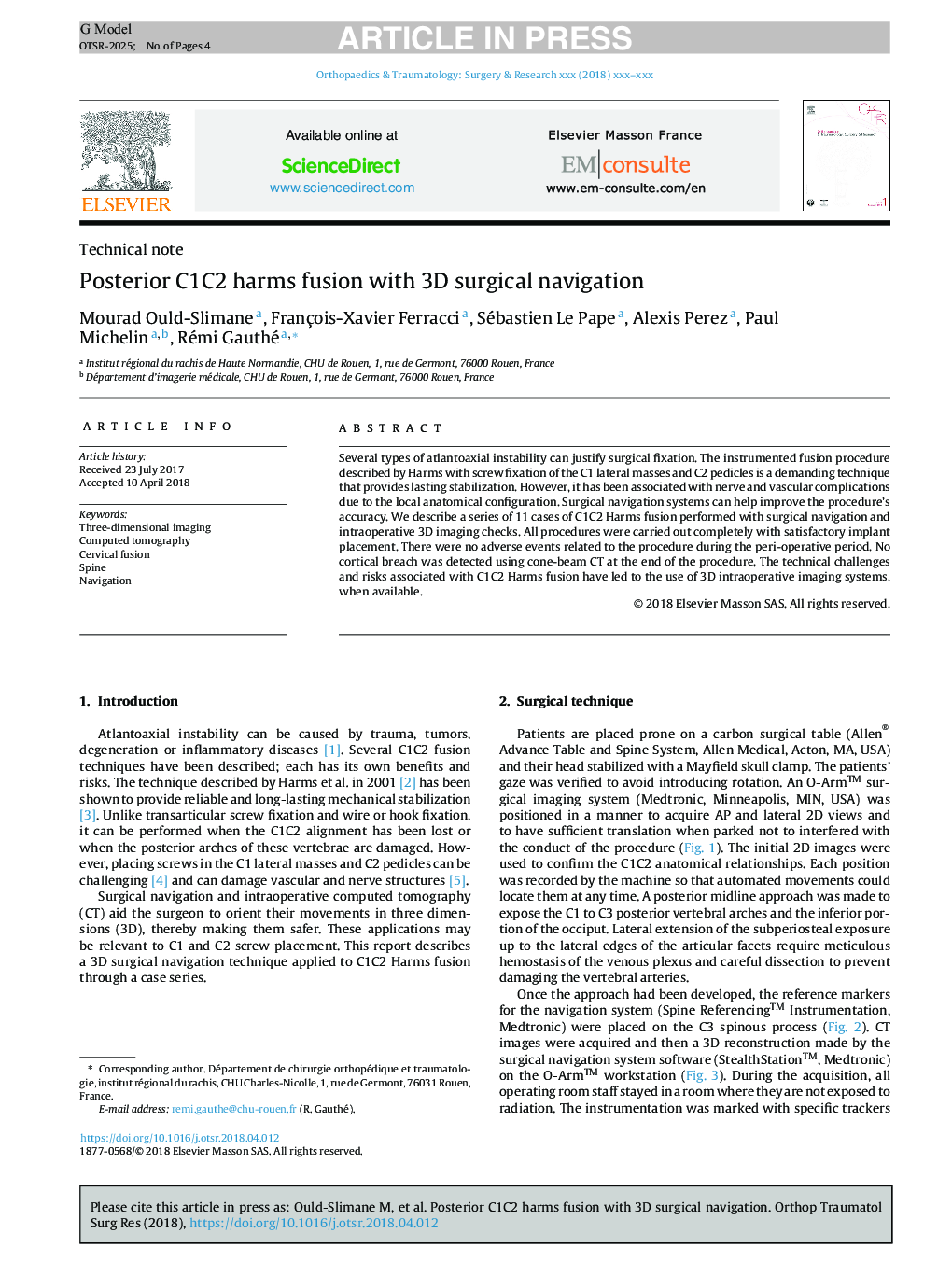| Article ID | Journal | Published Year | Pages | File Type |
|---|---|---|---|---|
| 8952483 | Orthopaedics & Traumatology: Surgery & Research | 2018 | 4 Pages |
Abstract
Several types of atlantoaxial instability can justify surgical fixation. The instrumented fusion procedure described by Harms with screw fixation of the C1 lateral masses and C2 pedicles is a demanding technique that provides lasting stabilization. However, it has been associated with nerve and vascular complications due to the local anatomical configuration. Surgical navigation systems can help improve the procedure's accuracy. We describe a series of 11 cases of C1C2 Harms fusion performed with surgical navigation and intraoperative 3D imaging checks. All procedures were carried out completely with satisfactory implant placement. There were no adverse events related to the procedure during the peri-operative period. No cortical breach was detected using cone-beam CT at the end of the procedure. The technical challenges and risks associated with C1C2 Harms fusion have led to the use of 3D intraoperative imaging systems, when available.
Related Topics
Health Sciences
Medicine and Dentistry
Orthopedics, Sports Medicine and Rehabilitation
Authors
Mourad Ould-Slimane, François-Xavier Ferracci, Sébastien Le Pape, Alexis Perez, Paul Michelin, Rémi Gauthé,
